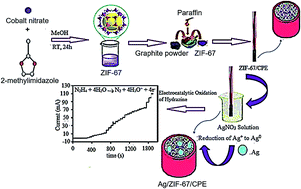Recent developments in electrochemical sensors for detecting hydrazine with different modified electrodes
Abstract
The detection of hydrazine (HZ) is an important application in analytical chemistry. There have been recent advancements in using electrochemical detection for HZ. Electrochemical detection for HZ offers many advantages, e.g., high sensitivity, selectivity, speed, low investment and running cost, and low laboriousness. In addition, these methods are robust, reproducible, user-friendly, and compatible with the concept of green analytical chemistry. This review is devoted to the critical comparison of electrochemical sensors and measuring protocols used for the voltammetric and amperometric detection of the most frequently used HZ in water resources with desirable recovery. Attention is focused on the working electrode and its possible modification which is crucial for further development.

- This article is part of the themed collection: 2020 Reviews in RSC Advances


 Please wait while we load your content...
Please wait while we load your content...